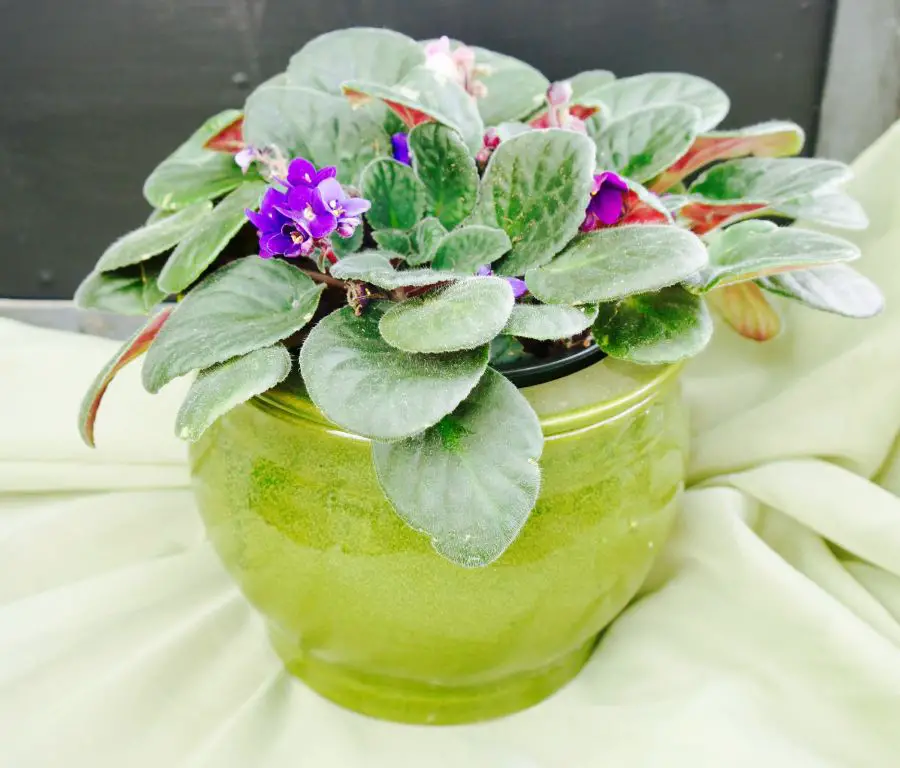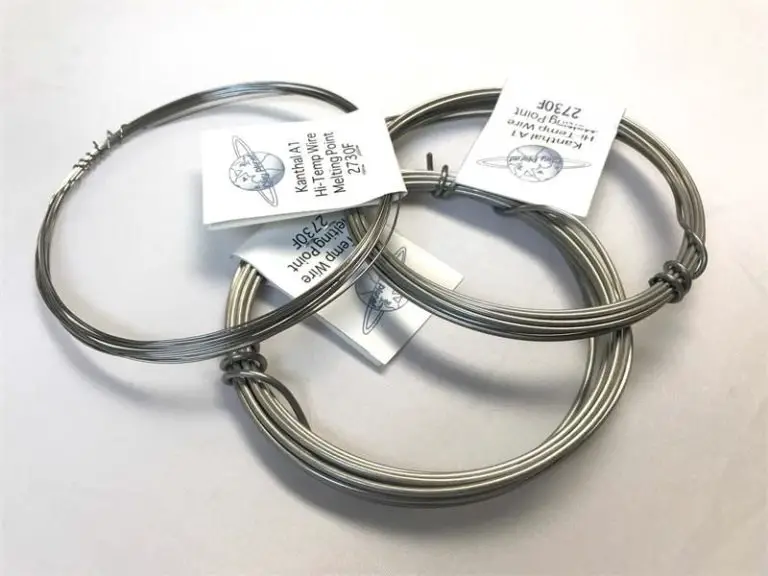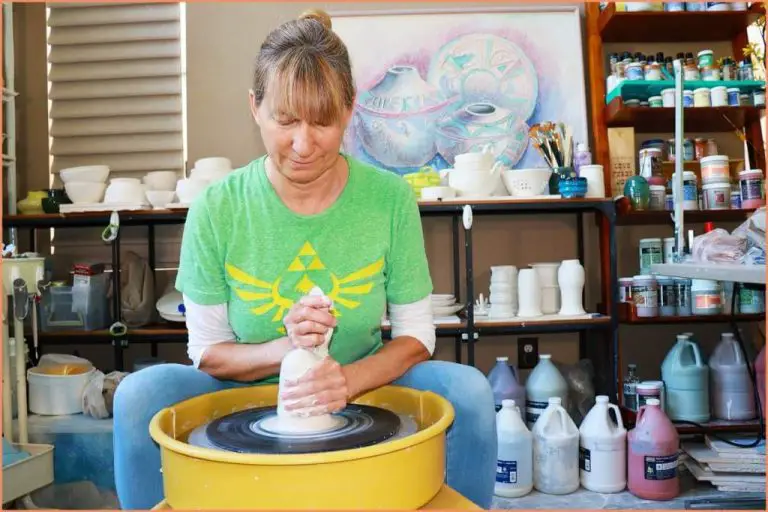Do Self-Watering Pots Work For African Violets?
African violets (Saintpaulia) are a popular species of flowering plant native to eastern Africa known for their bright, colorful blooms and velvety foliage. These compact perennials have long been beloved houseplants thanks to their excellent flowering capabilities, manageable size, and visually appealing leaves.
African violets thrive indoors but do require some specific care, especially when it comes to watering. Too much or too little moisture can cause issues like root rot, fungal diseases, wilting, and poor flowering. Finding the right watering balance can be tricky, leading many growers to look for solutions that automate or simplify the process.
Self-watering pots are one option that more and more African violet owners have been exploring. These containers are designed with built-in water reservoirs that work via capillary action to deliver moisture to the soil and roots as needed, helping to maintain an ideal and consistent moisture level.
For African violet growers frustrated with traditional watering methods, self-watering pots may offer potential benefits like easier care, healthier plants, and abundant blooms. But do these self-watering planters really work well for African violets? Let’s take a closer look.
African Violet Care Needs
African violets have specific care requirements to thrive. According to Houseplants For Dummies, they need bright, indirect light from an east or west window. Direct sun can burn their leaves. African violets prefer daytime temperatures of 70-75°F and around 60°F at night.
In terms of water, African violets like evenly moist soil but do not like wet feet. Allow the top inch of soil to dry out between waterings. They enjoy humid conditions, ideally 40-50% relative humidity. Well-draining potting soil designed for African violets provides the right balance of drainage and moisture retention.
Fertilizing with a balanced houseplant fertilizer diluted to 1/4 strength every 2-4 weeks during the growing season will support healthy growth. Good air circulation around the leaves prevents fungal diseases.
Challenges of Watering African Violets
African violets have very specific watering needs that can be tricky to maintain. A common challenge is keeping the soil evenly moist without overwatering. According to Doctor Optimara, overwatering is one of the most frequent causes of problems for African violets. When the soil stays soggy, it can lead to root rot and other diseases.
Root rot is one of the most serious dangers of overwatering African violets. As described by the African Violet Resource Center, overly wet soil causes the roots to suffocate and die. This makes the plant unable to absorb water and nutrients properly. Symptoms include drooping, mushy, and yellowing leaves. By the time these visible symptoms appear, the root rot is often advanced. Prevention through proper watering is key.
Underwatering can also be an issue if the soil dries out too much between waterings. The narrow margin between too wet and too dry soil makes maintaining the ideal moisture level difficult. Self-watering pots aim to help balance these watering challenges.
What are Self-Watering Pots?
Self-watering pots are a type of container designed to water plants automatically and maintain optimal moisture levels in the soil. They consist of an outer pot or reservoir that holds water, and an inner pot with soil where the plant sits. The inner pot has holes at the bottom that allow a nylon or cotton wick to hang down into the water reservoir below (Crescent Garden, 2023).

As the plant drinks water from the soil, the wick pulls more water up into the soil from the reservoir. This creates a self-watering system powered by capillary action and gravity. The water level in the reservoir goes down over time as the plant drinks, and gardeners simply refill it periodically. Many self-watering pots have indicators that show the water level or when refilling is needed (Easy Plant, 2023).
Advantages of self-watering pots include maintaining a consistent moisture level, preventing the soil from getting too dry or staying too wet. The continuous water supply can promote faster growth and healthier plants. Self-watering pots also require less frequent watering, making them convenient for vacations or times when regular watering isn’t possible. They can prevent problems like root rot that occur from overwatering (WikiHow, 2023).
Using Self-Watering Pots for African Violets
When using self-watering pots for African Violets, there are some best practices to follow for setting them up properly:
Fill the water reservoir in the bottom portion of the self-watering pot and let it sit for 12 hours before placing the plant (according to this source). This allows the soil to become fully saturated before the plant is put in. Make sure the water level never goes below the water line – top it off as needed.
Use an African Violet specific potting mix that is lightweight and fast draining. Avoid regular potting soils that will become too damp (according to this source). Aim for a mix with perlite, vermiculite or peat moss.
Place a wick through the drainage hole up into the bottom of the pot to draw water up into the soil. Use an appropriate wicking material like nylon rope or cotton yarn (according to this source).
Make sure the plant is not sitting directly in water by raising the inner pot slightly off the bottom. Place pebbles or marbles underneath to lift it up (according to this source).
Watch for signs of overwatering like yellowing leaves, root rot or mold growth. Adjust the water level or wick as needed.
Potential Benefits for African Violets
Using self-watering pots for African violets can provide some key benefits when it comes to maintaining optimal moisture levels for these plants.
One of the main advantages of self-watering pots is that they can help prevent overwatering, which is a common cause of issues for African violets (https://www.youtube.com/watch?v=n_7XTW9VSlI). The reservoirs in these pots provide a steady supply of water from the bottom up, delivering it to the roots as needed. This regulated water system means you don’t have to worry about over-saturating the soil by top-watering too frequently.
By preventing overwatering, self-watering pots also greatly reduce the risk of root rot in African violets. Root rot is a fungal disease that thrives in wet, poorly draining soil. Keeping moisture levels controlled with self-watering pots minimizes the chances of this disease taking hold.
In addition to preventing problems, self-watering pots also optimize moisture conditions for healthy growth. The reservoirs ensure the soil stays evenly moist but not soggy. This encourages stronger root development and keeps the plants hydrated for vibrant flowers and foliage.
Overall, self-watering pots are an excellent solution for maintaining ideal moisture levels for African violets. Their built-in reservoirs prevent overwatering and root rot while providing a constant supply of water to the roots. This allows the plants to thrive with minimal effort on the grower’s part.
Potential Drawbacks
While self-watering pots can make caring for African violets easier in some ways, there are some potential drawbacks to consider:
Cost – Self-watering pots are more expensive than regular pots, with most costing $10-30 each. This adds up if you want to use them for multiple plants (https://www.instagram.com/_growinghouseplants/?next=%2Fkingawegner%2Ffeed%2F&hl=nl).
Monitoring Water – You still need to monitor the water reservoir and refill it when low. If you forget to do this, the plant could dry out (https://www.instagram.com/_growinghouseplants/?next=%2Fstadny4eg%2F&hl=de).
Less Control Over Moisture – With self-watering pots, it’s harder to control exactly how much water the plant gets. In regular pots, you can fully saturate or lightly water the soil as needed.
Tips for Success
There are a few key tips to ensure self-watering pots work well for African violets:
- Use an appropriate soil mix – African violets require a loose, airy potting mix that drains well. Look for a houseplant or African violet specific potting mix. Avoid using regular potting soil, as it may become too compacted (https://www.tool.com/4-inch-self-watering-pot).
- Monitor moisture levels – Check the reservoir regularly to ensure it doesn’t empty completely, as this can allow the soil to dry out. Replenish water when the reservoir is low. You may need to refill it 1-2 times per week (https://www.aboutspace.in/blogs/ideas-and-inspiration/how-does-bottom-watering-differ-from-top-watering).
- Follow setup instructions – When first planting in a self-watering pot, water well to saturate the soil. Make sure the water reservoir is filled. Position the water wick properly so it reaches into the reservoir to absorb and transfer water to the soil.
By using the right soil, checking moisture levels routinely, and setting up the self-watering system correctly per instructions, you can increase the chances of success when growing African violets in self-watering pots.
The Bottom Line
Self-watering pots offer both benefits and drawbacks for African violet care. The main benefits are convenience and consistency in watering, which can promote healthy growth. By providing a constant moisture supply, self-watering pots eliminate issues with under or over-watering. They also reduce the labor involved in traditional watering methods.
However, self-watering pots do come with risks like root rot if the reservoir is overfilled. They limit your control over moisture levels. The soil may stay overly wet, which African violets dislike. You also lose the ability to adjust watering based on seasonal needs. Additionally, mineral buildup can occur in the pots over time.
Overall, self-watering pots can be a viable option for African violets if used properly. Make sure to follow tips like monitoring moisture levels, using fast-draining soil, allowing the reservoir to empty fully between refills, and flushing mineral deposits regularly. With the right conditions, African violets can thrive in self-watering pots. But they require more attentiveness than with traditional watering methods.
Additional Resources
If you want to learn more about caring for African violets and using self-watering pots, here are some helpful resources:
The blog Houseplants for Beginners has a comprehensive guide on African violet care covering watering, lighting, humidity, and more: https://houseplantsforbeginners.com/african-violet-care/
The African Violet Society of America is a great resource for African violet enthusiasts, with care sheets, cultivation tips, contests, and more: https://www.africanviolets.org/
This Reddit thread has recommendations for good grow lights to use with mini African violets: https://www.reddit.com/r/houseplants/comments/18n3rmm/recs_for_small_standalone_grow_lights_for_mini/
The Spruce has an overview of self-watering pots and how to use them effectively for houseplants: https://www.thespruce.com/self-watering-pots-for-houseplants-5079440



